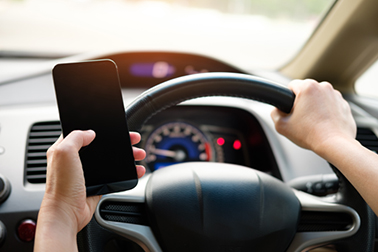Issue 161 - July 2025
LEGAL MATTERS

California Employers Should Review Their Cellular Phone and Driving Policies Following Recent Court of Appeal Decision
By Jennifer S. Grock, Partner, and Jonathan Judge, Partner, Atkinson, Andelson, Loya, Ruud & Romo
Originally published on July 14, 2025. Reprinted with permission from Republished with permission from Atkinson, Andelson, Loya, Ruud & Romo.
California employers are encouraged to review their cellular phone and driving policies in light of a recent Court of Appeal decision which bars drivers from using any functions on a handheld cellular phone while driving. People v. Porter, 111 Cal. App. 5th 927, 333 Cal. Rptr. 3d 168, 171 (2025).
On June 3, 2025, the California Court of Appeal issued a ruling in Porter, which reinstated the traffic conviction of a driver who had viewed a mapping application on his cellular phone while holding the phone and driving. The defendant, Nathaniel Gabriel Porter, who was convicted of violating Vehicle Code section 23123.5(a) – which prohibits drivers from “holding and operating” a handheld cellular phone unless it is used in a manner that allows voice-operated and hands-free operation – appealed his traffic conviction to the appellate division of the Santa Clara Superior Court. Porter argued that the statute prohibited only listening and talking on a handheld phone. The appellate division agreed and reversed the conviction, concluding that “operating” a cellular phone under the statute requires active use or manipulation of the device, such as talking, listening, emailing, or otherwise engaging with the phone, rather than simply observing GPS directions. The Court of Appeal then reviewed the case, ultimately reinstating Porter’s conviction.
The court’s ruling concluded the statute prohibits all use of a cellular phone’s functions while driving and holding the phone, including passively looking at an application on the phone. The Legislature intended to curb distracted driving stemming from the expanded functionality of modern phones by banning all use of a phone’s functions while held in the hand. Further, the court reasoned that Porter’s use of his handheld cellular phone while driving implicated safety concerns. Under Porter’s interpretation of the statute, the court opined that a driver could not only view a mapping application, but also watch a video or other similarly dangerous, distracting activities, while driving. The court decided that Vehicle Code section 23123.5(a) was correctly interpreted as barring drivers from using any application or function on a cellular phone while holding the phone and driving.
Given this ruling, California employers should consider if any updates are necessary to their employment policies. While many employers may already have policies in place which require hands-free cellular phones to make and receive calls while driving, the Porter case holds that any use of a cellular phone violates the law when holding the phone and driving. Employers may need to review their policies to ensure the policy bars employees who are driving for work purposes from engaging in any use of a handheld phone and to suggest alternatives such as a cellular phone windshield mount so that drivers can observe mapping applications if necessary.
Employers with questions about their cellular phone, driving, and other employment policies may contact the authors of this post or their usual counsel at AALRR.
This AALRR publication is intended for informational purposes only and should not be relied upon in reaching a conclusion in a particular area of law. Applicability of the legal principles discussed may differ substantially in individual situations. Receipt of this or any other AALRR publication does not create an attorney-client relationship. The Firm is not responsible for inadvertent errors that may occur in the publishing process.
< Back to Full Issue Print Article
